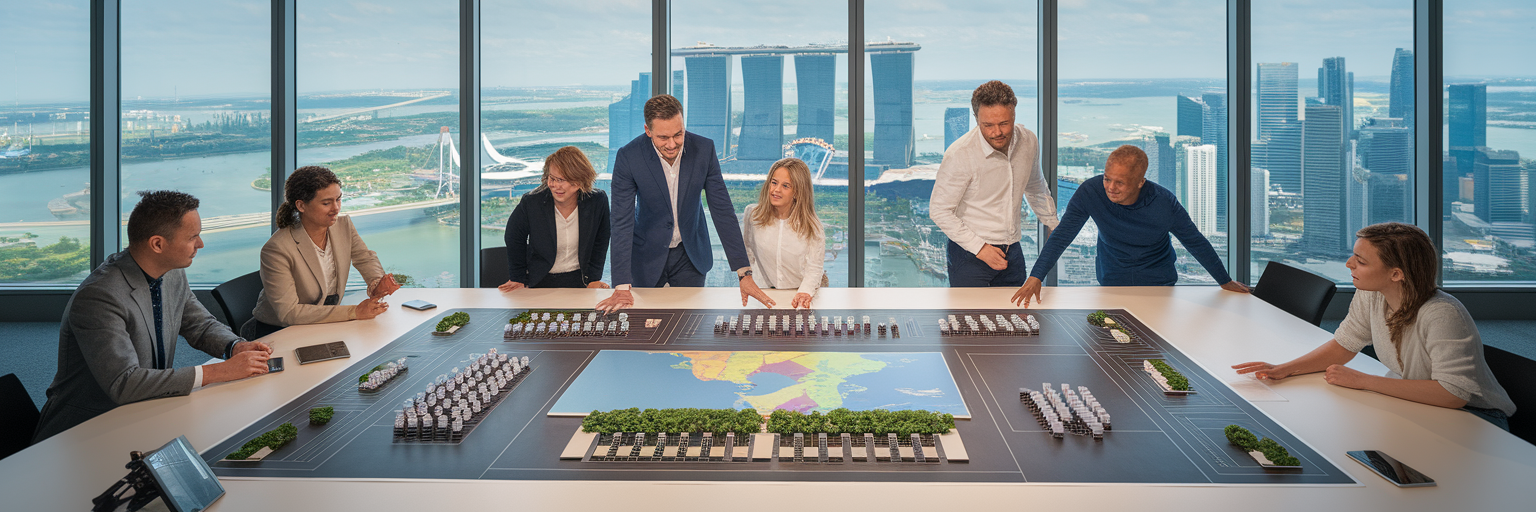How to Plan Inclusive Hybrid Events in Singapore with Real Time Multilingual Support
Master the art of creating engaging and accessible corporate events for diverse international audiences using advanced language solutions.

Master the art of creating engaging and accessible corporate events for diverse international audiences using advanced language solutions.

Singapore’s position as a global MICE hub is well established, serving as a strategic gateway for high-value corporate gatherings and incentive trips across Asia. Companies invest significantly to bring their top performers here, expecting a flawless experience. Yet, a common oversight can diminish the entire investment: the language barrier. We have all seen it, a joke from the CEO that lands perfectly with one half of the room while the other half offers polite, delayed smiles. That small moment of disconnect reveals a much larger problem.
Real-time multilingual support is no longer an optional add-on. It is a fundamental pillar of modern event design. Providing this support signals a company’s genuine commitment to every single participant, making them feel seen and valued. It transforms a standard corporate trip into a truly inclusive experience, directly impacting employee morale and brand perception. When a team member from Tokyo can engage with a keynote speaker in their native language, the message is not just heard, it is felt.
Effective MICE event planning in Singapore must therefore place inclusivity at its core. The goal is to create a framework that can be scaled across the region, ensuring that whether your team is gathering in Singapore or embarking on a trip throughout Asia, every participant shares the same powerful experience. This is the new standard for successful incentive travel planning in APAC.

Before any technology is deployed, a successful multilingual event is built on a foundation of careful preparation. Overlooking these initial steps is like building a house without a blueprint. It risks confusion and technical issues on the event day, undermining the entire experience. A structured approach ensures every detail is considered, creating a seamless environment for all attendees.
Here is a practical process for the pre-event phase:
With the foundational planning complete, the focus shifts to the technical execution of real time event translation services. The goal is to make the technology feel invisible to the attendee, allowing them to immerse themselves in the content without friction. This requires a thoughtful combination of human skill and technological tools, supported by robust infrastructure.
The most effective approach often blends the best of both worlds. Human interpreters provide the nuance, cultural context, and accuracy essential for keynote speeches and critical negotiations. Simultaneously, AI-driven live captions and transcriptions can supplement this by enhancing corporate event accessibility. As noted by Interprefy, a leading provider in the space, integrating AI-driven systems is key to enabling real-time multilingual support for diverse audiences. This hybrid model ensures that while the main sessions are perfectly translated, attendees can also follow along with text in their own language, a crucial feature for those who are hearing-impaired or simply prefer to read along. This is one of the 5 steps you need in digital experiences to create emotions & kick-ass engagement.
The quality of your hardware directly impacts the attendee experience. This includes high-quality, noise-cancelling headsets for interpreters to ensure they can focus, professional microphones for speakers to capture crisp audio, and a reliable distribution system for in-person attendees. Most importantly, the entire system depends on redundant, high-speed internet at the Singapore venue. A single connection is a single point of failure. A backup is essential.
The final piece is the user journey. For in-person attendees, this means providing easy-to-use headsets with clearly marked channels. For virtual participants, it involves a simple, intuitive dropdown menu within the event platform to select their preferred language. A dedicated, bilingual technical support team should be on standby to assist anyone who encounters issues, ensuring no one is left behind.
| Technology | Best Use Case | Key Consideration |
|---|---|---|
| Human Simultaneous Interpretation | Keynote speeches, high-stakes negotiations, nuanced discussions | Highest accuracy and cultural context; requires professional interpreters and specialized hardware. |
| AI-Powered Live Translation | Live captions for accessibility, translating chat messages, budget-conscious sessions | Instant and scalable for many languages; may lack nuance and accuracy for complex terminology. |
| Hybrid Model (Human + AI) | Large-scale inclusive hybrid events Singapore with diverse audiences and content types | Offers the best of both worlds: human accuracy for main sessions and AI for broader accessibility. |
Note: The optimal choice depends on the event's objectives, audience composition, and budget. A hybrid model is often the most robust solution for complex MICE events.

Technology alone does not create an inclusive experience. The human elements of communication and engagement are what truly make every attendee feel welcome and connected. A thoughtful attendee journey anticipates needs and removes barriers, ensuring the multilingual support for corporate events is not just available but actively used and appreciated. It is the difference between simply offering a tool and genuinely integrating it into the fabric of the event.
Here are actionable strategies to ensure a smooth and inclusive experience for everyone:
The principles of designing inclusive hybrid events in Singapore are not confined to the city-state. Instead, this model serves as a powerful benchmark for incentive travel across the entire Asia-Pacific region. Global clients have come to expect a high standard of technological integration and accessibility, and the Singapore framework provides a portable and scalable solution to meet those expectations.
The technology stack and human-centric approach are adaptable to any location. Imagine a guided tour of the Grand Palace in Bangkok. For a mixed-language group, this experience can be fragmented. However, by equipping the group with a portable interpretation system, a single guide’s narrative can be broadcast in multiple languages simultaneously. Suddenly, every participant shares the same awe-inspiring moment, together. Whether it is a conference in Singapore or an incentive trip to our office in Bangkok, the same principles of inclusivity apply to create a seamless experience.
Ultimately, investing in this level of inclusivity is not a cost. It is a strategic investment in your people. It demonstrates a deep respect for diversity and creates truly impactful incentive programs that motivate a global workforce. This commitment is what separates standard trips from unforgettable experiences and is the ultimate goal of superior incentive travel planning in APAC, delivering measurable engagement and business success.